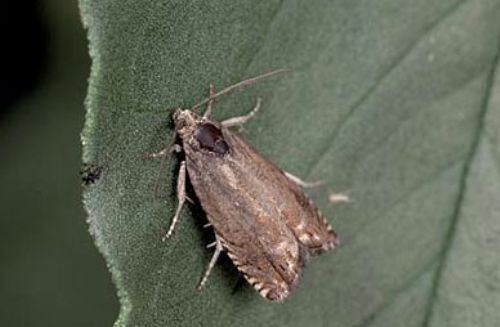
Bruchid beetles have been very active in both winter and spring beans due to the high temperatures experienced in the last week.
Winter beans are approaching first pod set, or may already have set bottom pods and will be susceptible to egg-laying. In areas of the country where temperatures have been 20’C for two consecutive days and first pods are exposed and about 1 to 2 cm long, first insecticide applications should be made as soon as possible. The threshold is likely to be reached this week for most winter bean crops.
Spring bean crops are approaching flowering or have one or two flowering trusses. These crops should be sprayed only when they reach first pod and temperatures are 20°C for two days.
Pea moth
There have been no reports of pea moth yet. Pea moth traps should be placed in crops now if they are not already in place. Traps should be monitored three times a week and a threshold is reached when 10 moths are caught in either trap on two consecutive occasions.
When a threshold is reached, a spray date can be forecast using the PGRO pea moth line on 01780 783099. Crops will not be ready for spraying until first pods are set. Tolerance levels in vining peas are lower and crops should be sprayed at first pod where moths have been caught, even in low numbers, in traps.
Silver Y Moth
Traps are available from Agralan Ltd., the Old Brickyard, Ashton Keynes, Swindon, and should be placed in crops as soon as possible. The threshold for spraying is a cumulative total of 50 moths per trap by the time peas have reached first pod stage.
Diseases in spring beans
Downy mildew is present in spring bean crops. Plants develop pale patches on the surface, with grey-mauve fluffy mycelium on the underside of leaves. Crops should be treated when a threshold of 25% of the tops of plants are infected.
